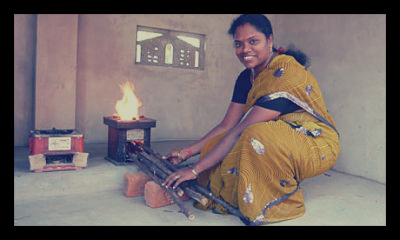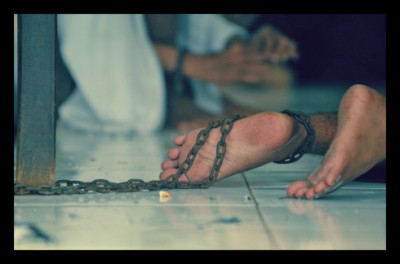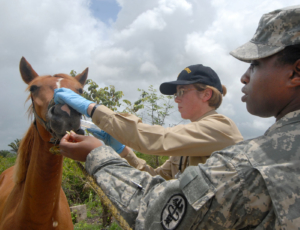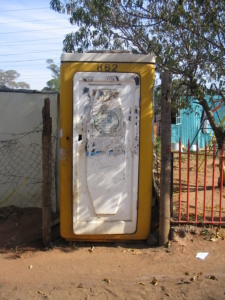
Prakti, an Indian company, is using innovating design solutions to battle rising death tolls that come from cookstove usage throughout India. Nearly 3 billion homes in the country use inefficient cookstoves that lead to high levels of toxic indoor pollution, as the fuel used ranges from animal feces to coal. It is estimated that nearly 4 million people worldwide have died due to indoor air pollution – more than have died from tuberculosis and malaria.
Prakti has been dedicated to finding creative designs to combat this problem, although founder Serrar acknowledges that finding the perfect combination of design and affordability is not always simple. Since cookstoves are used not only in India, but throughout other developing nations in Southeast Asia, the cookstoves must be designed for use in different cultures and environments. For this reason, Prakti is not able to standardize and produce cookstoves in bulk.
Prakti sends a representative to a community in need of efficient cookstoves, along with a few prototypes, to discuss with the people their needs and the viability of each design for that select environment. Although Prakti has only sold around 8,000 cookstoves thus far, the market remains largely untapped, with innovative cookstoves only having reached nearly 1% of the total market.
Although Prakti’s stoves are a bit more expensive than traditional stoves, at 1,000 rupees each, Serrar asserts that the money a family saves in healthcare costs and future illnesses more than makes up for the extra cost paid up front. A traditional wood-burning stove in India costs around only 100 rupees. Prakti is still working on reducing costs of their cookstoves, and is looking into microfinance options and corporate sponsors, along with the option of creating local jobs and having the new cookstoves built onsite or nearby to reduce costs.
– Christina Kindlon
Source: Guardian
 The United States Agency for International Development (USAID) and the Department of Health commended a volunteer-based organization in the Philippines named the Family Planning Organization of the Philippines (FPOP). The group, located in Iloilo City, teaches young students in poor villages about preventing unplanned pregnancy and provides reproductive education. Many low-income families living in the Philippines do not have access to family planning services, so the Filipino volunteer organization has been working diligently to provide this much-needed information.
The United States Agency for International Development (USAID) and the Department of Health commended a volunteer-based organization in the Philippines named the Family Planning Organization of the Philippines (FPOP). The group, located in Iloilo City, teaches young students in poor villages about preventing unplanned pregnancy and provides reproductive education. Many low-income families living in the Philippines do not have access to family planning services, so the Filipino volunteer organization has been working diligently to provide this much-needed information. There is some unimaginable technology in this day and age, especially when it comes to its application in developing countries. Many of us are aware of the wonders that small-tech devices can have in education and micro-finance businesses. But when it comes to health-related technology, things can get more expensive and less mobile. Premiering at this year’s SXSW Festival in Austin, Texas is a series of devices that may be the new tools for health clinics around the world with the potential to reduce the cost of expensive equipment, improve patient record keeping, and most importantly save lives. This festival introduces life-saving devices.
There is some unimaginable technology in this day and age, especially when it comes to its application in developing countries. Many of us are aware of the wonders that small-tech devices can have in education and micro-finance businesses. But when it comes to health-related technology, things can get more expensive and less mobile. Premiering at this year’s SXSW Festival in Austin, Texas is a series of devices that may be the new tools for health clinics around the world with the potential to reduce the cost of expensive equipment, improve patient record keeping, and most importantly save lives. This festival introduces life-saving devices. Dr. Gerard Barry, project leader for the International Rice Research Institute (IRRI), is developing a type of genetically modified rice called “Golden Rice.” This rice contains the essential nutrient beta-carotene, the source of vitamin A, which is often lacking in the diets of people living in poverty. The GMO rice is referred to as “Golden” because beta-carotene produces an orange color once added to the rice. Dr. Barry and IRRI are working to address vitamin A deficiency in developing countries and hope that Golden Rice is the answer.
Dr. Gerard Barry, project leader for the International Rice Research Institute (IRRI), is developing a type of genetically modified rice called “Golden Rice.” This rice contains the essential nutrient beta-carotene, the source of vitamin A, which is often lacking in the diets of people living in poverty. The GMO rice is referred to as “Golden” because beta-carotene produces an orange color once added to the rice. Dr. Barry and IRRI are working to address vitamin A deficiency in developing countries and hope that Golden Rice is the answer. For many Indonesians, having a mental health condition can be like a prison sentence — literally. “Pasung,” or shackling, is still a common practice in many areas of the country, particularly in rural areas with little capacity for medical treatment. Those who are seen as suffering from mental illness are sometimes bound and held captive behind their home, or inside a small room. Those who engage in “pasung” believe that they need to restrict the mentally ill from attacking or hurting themselves or others. However, shackling has been banned as a solution for mental illness in
For many Indonesians, having a mental health condition can be like a prison sentence — literally. “Pasung,” or shackling, is still a common practice in many areas of the country, particularly in rural areas with little capacity for medical treatment. Those who are seen as suffering from mental illness are sometimes bound and held captive behind their home, or inside a small room. Those who engage in “pasung” believe that they need to restrict the mentally ill from attacking or hurting themselves or others. However, shackling has been banned as a solution for mental illness in 
 How is poverty fought? Well, there are many different approaches that are currently being tried and some may seem more self-explanatory than others. For example, there are micro-lending, education aid, anti-corruption efforts, and attempts to create jobs and industry. But what about
How is poverty fought? Well, there are many different approaches that are currently being tried and some may seem more self-explanatory than others. For example, there are micro-lending, education aid, anti-corruption efforts, and attempts to create jobs and industry. But what about 